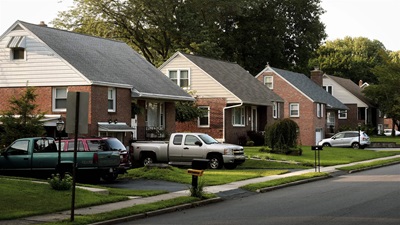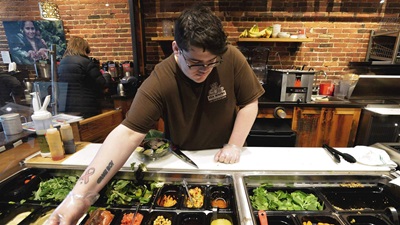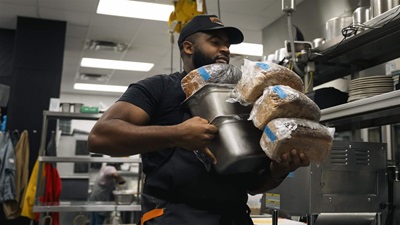How Federal Policymakers Can Improve Student Loan Servicing
Current challenges make it more difficult for borrowers to repay loans

The nation’s student loan servicing system requires additional federal investment so it can better help borrowers make timely payments and ensure that taxpayer dollars are protected. The system’s current challenges—including inadequate funding and problematic application processing—are hindering borrowers’ ability to repay their loans.
With the federal Department of Education resuming collections activity in May for more than 5 million defaulted borrowers, both Congress and the department can implement changes that streamline the servicing process to help borrowers and taxpayers alike.
Although the department originates and disburses all federal student loans, it does not handle the logistics of processing monthly payments when borrowers enter repayment. That responsibility falls to student loans servicers, the private or nonprofit organizations contracted by the department for this task.
The current servicing system must contend with significant problems that adversely affect borrowers’ success at repaying their loans and avoiding default. Many of these problems involve difficulties enrolling in what are known as income-driven repayment (IDR) plans, a key tool for preventing delinquency and default. IDR plans set minimum payments based on income and family size for struggling borrowers that allow for financial relief.
Student loan default occurs when a borrower goes more than 270 days without making a payment. At that point, the loan becomes eligible for collections mechanisms that can include the garnishment of wages, Social Security checks, and tax refunds.
Applications for IDR plans, which are often more affordable, came back online in May following a prolonged pandemic-related pause, and more changes to repayment are on the horizon. Borrowers need clear and accessible communication from their student loan servicers about IDR plans and repayment expectations to stay current and avoid default.
Better servicing can help struggling borrowers
In 2023, the department awarded new servicing contracts as it started to implement its initiative, the Unified Servicing and Data Solution (USDS), the latest attempt to fix long-standing issues with student loan servicing. USDS changes the basic compensation mechanism for servicers and establishes new financial incentives and penalties intended to promote better outcomes, particularly for borrowers at risk of delinquency and default.
In addition to the USDS changes, the department also recently implemented new procedures that allow borrowers enrolled in IDR to have their income data automatically shared between the IRS and the department each year, eliminating a key friction point that made it difficult for borrowers to remain in their plan of choice. Yet, barring additional federal investment, these fixes are unlikely to reach all borrowers.
Maintaining these changes and funding the full implementation of key servicing reforms are essential to ensuring high-quality servicing for borrowers eager to stay on track with repayment. For example, the department can evaluate the effectiveness of USDS by verifying that servicers are directing financially struggling borrowers to effective long-term solutions—such as IDR plans—and ensuring that servicers are gaining borrower consent for tax data sharing that can help automate IDR recertification from one year to the next.
Investment will help ensure a stable servicing environment
Policymakers should focus on several priorities as they consider how best to balance borrower needs and taxpayer dollars moving forward. For example, they should seek to ensure:
- Expedient processing of IDR applications. With IDR applications back online and collections activity resuming, struggling borrowers need to be able to access an IDR plan that could offer lower payments. They also should not get stuck in a confusing in-between status that around 1.9 million borrowers are currently experiencing. The department should encourage servicers to prioritize the processing of IDR plan applications to help clarify borrowers’ repayment expectations and set them on a sustainable course.
- Adequate funding for servicing. Effective implementation of the USDS servicing improvements and the maintenance of a high-quality servicing environment hinge on sufficient funding. In recent years, Federal Student Aid (FSA), a part of the Department of Education, has faced declining funding levels, even though more funds are needed to implement USDS and related information technology improvements to protect borrowers and ensure system stability. However, the recently passed reconciliation bill includes $1 billion in funding for FSA over the next two years. This increased funding from Congress will help provide servicers with enhanced capability to proactively reach out to borrowers and may need to be supplemented in the future.
- Agency responsibility for student loans and borrower stability. Since the start of 2025, the Trump administration has reportedly been considering transitioning federal student loan servicing responsibilities from the FSA to another federal agency. Policymakers have explored shifting student loan responsibility to other agencies in the past to mixed results. For example, in 2016, the Department of the Treasury initiated a pilot to explore how the agency would perform collecting defaulted student loan debt compared with the system in place specifically to manage borrowers in default. The pilot collected substantially less money, and transitioned significantly fewer borrowers back into repayment, than the “control group” managed by the federal private collection agencies. Policymakers should heed these lessons and make sure that borrowers and taxpayer dollars do not slip through the cracks.
- Improved ability of borrowers to exit default. When borrowers default, their loans are transferred to a different group of contractors. These contractors work to collect borrowers’ outstanding debt. They are also responsible for helping to cure the defaults and transition borrowers back to the typical repayment system. Yet many in default have found this transition challenging, and that contributes to high redefault rates. Borrowers exiting default often do not enroll in an IDR plan, leaving them unable to afford higher payments in the standard plan, which eventually leads to redefaulting.
As collections activity resumes, policymakers should prioritize improving the handoff between the collections and repayment systems, including enrollment in data sharing. That would help ensure that borrowers are not only aware of options such as IDR, but they can enroll easily in such plans once back in the repayment system. This approach can significantly reduce the risk of borrower confusion and financial distress, helping to foster a more resilient and supportive repayment environment that benefits everyone.
Shelbe Klebs is a senior associate and Brian Denten is an officer with The Pew Charitable Trusts’ student loan initiative.











